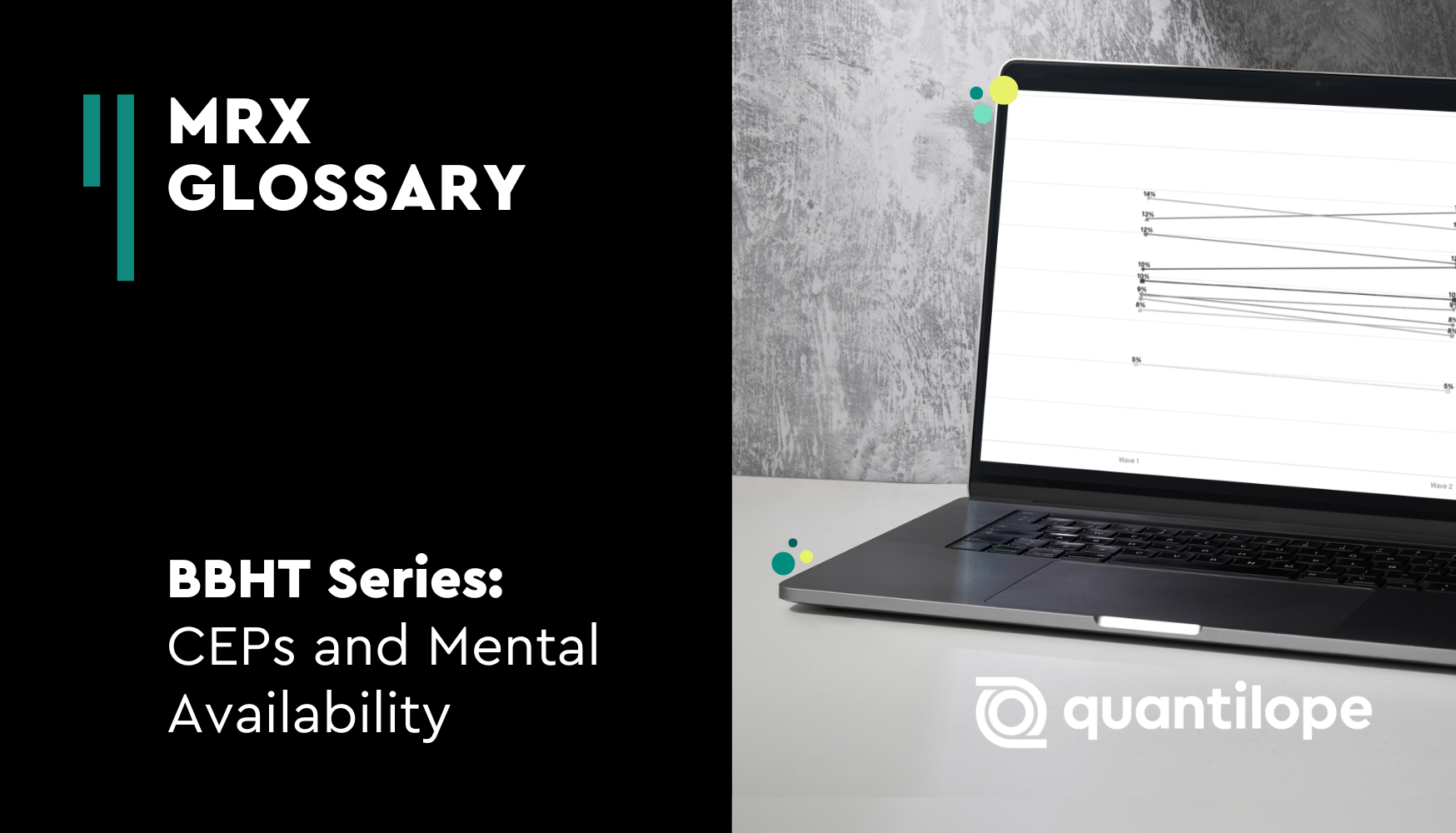In this next post in our BBHT series, we highlight two key aspects of BBHT: Category Entry Points (CEPs) and Mental Availability analysis.
Hopefully, you’ve already checked out our first BBHT series post: The Basics of Better Brand Health Tracking, which highlights the importance of brand health tracking and how it’s traditionally been done with brand funnel metrics (awareness, consideration, and usage). In this post, we'll explore more modernized concepts to understand how they generate high-quality, actionable, brand health insights.
First, let's explore Category Entry Points (CEPs); these are the ‘cues’ that guide a consumer to a certain buying scenario. For example, ‘packing for a summer vacation’ might be a cue to go out and buy sunscreen or travel-sized items; as such, ‘packing for a summer vacation’ is a CEP for those products. Similarly, ‘hosting a party’ might be a cue to go to the store and buy chips, liters of soda, paper plates, trash bags, and other items necessary for a party. Therefore, ‘hosting a party’ is a CEP for all these types of goods. CEPs are essential to understand so that you know the contexts in which consumers are likely to be thinking about your product category. Knowing this allows you to cater your marketing messaging and other branding efforts to those specific scenarios so that consumers will think of your brand when going out to buy those items (this is what’s known as Mental Availability).
Mental Availability analysis provides critical brand insights around when consumers are thinking about a specific brand in certain buying scenarios (aka, when they find themselves in Category Entry Points). So, when a consumer is packing for a summer trip and thinking about buying sunscreen and travel items, they go to the store knowing they want to look for Banana Boat sunscreen or a travel-sized Dove body wash. That indicates strong Mental Availability for those brands - which is the ultimate goal to help brands grow.
Both CEPs and Mental Availability analysis are based on the acclaimed work of Professor Jenni Romaniuk of the Ehrenberg-Bass Institute of Marketing Science (author of Better Brand Health and co-author of How Brands Grow). Below are a few additional examples of what CEPs and Mental Availability would look like for various brands:
|
Industry |
Category Entry Point |
Mental Availability |
|
Footwear |
Running a race/marathon |
Heading to the store for a new pair of Asics |
|
Furniture |
Moving to a new home |
Going to Wayfair.com |
|
Grocery |
Hosting a Superbowl party |
Planning the menu with Franks Red Hot for buffalo chicken dip |
|
Travel |
Booking a vacation |
Searching for new Samsonite luggage |
CEPs can be needs, occasions, reasons, or motivations - they can be lots of different types of things, but what is important when designing your tracking survey is that these elements are applicable to your category, not just your brand.
One way to generate a list of CEPs is what is called the ‘7 W’ framework. For example, the '7W' framework for soda might look like...
- why: thirst-quenching or craving something sweet
- when: hot summer day
- where: convenience store
- while: relaxing
- with whom: with friends or for self-indulgence
- with what: sandwich or an alcoholic beverage
- how I’m feeling: thirsty or low energy
You can use previous research to come up with these '7Ws', or you can run qualitative pre-studies before launching your full brand tracking study to understand the most relevant CEPs in your category. Through advanced brand tracking software, quantilope's BBHT approach works by using its AI co-pilot, quinn, to come up with a long list of CEPs across each of the '7Ws', and then running an implicit pre-test study to be able to finalize the top ones.
More specifically, quantilope's templated pre-study uses a single implicit association test (SIAT) to test respondent reactions to the quinn-generated CEPs, then takes (roughly) the top 20 CEPs to use in the maintemplated Better Brand Health Tracking study. In the main study, respondents select which brands they feel ‘fit’ with each of those 20 associations - which later leads to Mental Advantage analysis. Primarily though, these responses to these CEPs generate four key Mental Availability metrics that we explore in our next BBHT series post: Benefits of Tracking Mental Availability.




